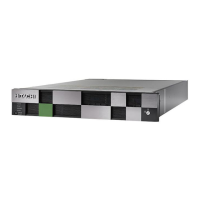■
Re
view the information gauge for each storage system to identify which storage
system needs additional capacity.
■
Review unused disks for each storage system to determine if any raw unused capacity
is available for parity group creation.
Capacity subscription beyond the total available capacity should not be an issue if your
thin capacity utilization is well within the total capacity.
Analyzing tier metrics
As parity groups are created, the various disk types become categorized into tiers. The
tiers and corresponding disk types are shown below.
Table 1 Tier denitions
Tier Disk type
Platinum SSD, FMD, and FMD DC2
Gold SAS 15 k
Silver SAS 10 k
Bronze SAS 7.2 k
Note: Adding all tier capacities together equals the T
otal Usable Capacity in
the center of the information gauge.
Analyzing data protection metrics
The balance of your protected primary volumes and secondary volumes depends on the
number of copies you have chosen to maintain, and also on the type of the data
protection technology being used. If you choose to set aside more volumes for data
protection, then the overall usable capacity may be aected. On the other hand, if you
have a large amount of unprotected data, you may want to consider data protection
options.
Note: These data pr
otection capacity numbers are based on oversubscribed
allocations and as a result will correlate with the overall oversubscription
percentage, not the usable capacity numbers represented in the rest of the
information gauge.
Analyzing data in the dashboard
Chapter 1: System administration overview
System Administrator Guide for VSP Gx00 models and VSP Fx00 models 26

